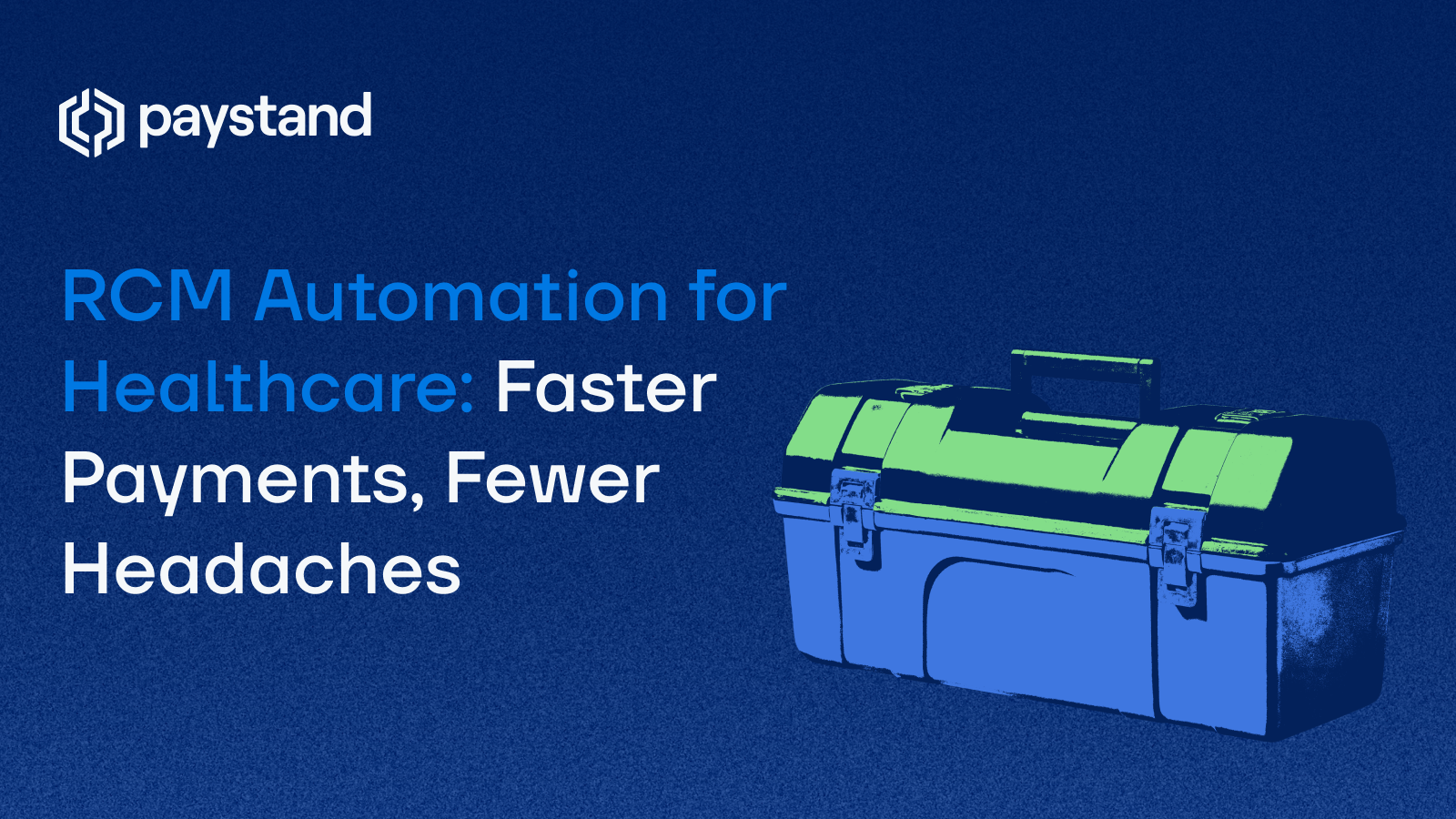RCM Automation for Healthcare: Faster Payments, Fewer Headaches

Key Takeaways
- Revenue Cycle Management (RCM) is critical to financial health in the healthcare industry, helping companies manage claim submission, payment collection, and reconciliation.
- Automating the revenue cycle reduces Days Sales Outstanding (DSO), streamlines medical billing, and minimizes claim denials.
- By modernizing accounts receivable (AR) operations, healthcare businesses—from hospitals to healthtech SaaS companies—can accelerate cash flow and reduce errors.
- Automation supports better visibility into patient accounts, billing and coding accuracy, and insurance claims processing.
Table of Contents
- What is Revenue Cycle Management (RCM)?
- Why RCM is Crucial in the Healthcare Industry
- Key Stages of the Revenue Cycle
- Common Challenges in RCM
- RCM Best Practices for Financial Optimization
- How Automation Improves the Revenue Cycle
In healthcare, every second counts. But outside of operating rooms and clinics, there’s another area where precision and timing are just as critical: the financial operations behind the scenes.
Healthcare businesses—from hospitals and labs to healthtech platforms and medical device manufacturers—depend on fast, reliable revenue collection to stay operational. Yet managing cash flow in this sector is anything but simple. Delayed payments, complex insurance claims, and manual processes create friction at nearly every step of the revenue cycle.
That’s where automation can make a lasting impact.
This article explores how automating your revenue cycle can reduce Days Sales Outstanding (DSO), streamline collections, and help even the most complex healthcare organizations take control of their cash flow, without adding more manual effort to their teams.
What is Revenue Cycle Management (RCM)?
Revenue Cycle Management (RCM) is the process of managing the financial flow of healthcare services, from the moment a patient schedules an appointment to the final bill payment. It includes everything from patient registration and medical coding to claim submission and insurance coverage verification. While RCM is often associated with clinical settings, it’s equally vital for B2B healthcare payments like invoicing hospital networks, diagnostics labs, or corporate medical equipment buyers.
Why RCM is Crucial in the Healthcare Industry
The healthcare industry faces unique financial complexities: delayed payments, regulatory burdens, and fragmented payer systems. A refined RCM system ensures timely reimbursement, reduces overhead, and avoids revenue leakage. With rising pressure to cut costs and boost margins, businesses that rely on healthcare payments—from insurance companies to suppliers—cannot afford inefficient financial operations.
For those looking to move away from manual work and aging portals, cashless healthcare models offer a strategic advantage. They help organizations increase collections and reduce error rates.
Key Stages of the Revenue Cycle
-
Patient Registration
Collecting accurate demographic and insurance information upfront.
-
Insurance Verification
Confirming insurance coverage and eligibility to prevent claim denials.
-
Patient Care Delivery
Delivering healthcare services while capturing detailed medical documentation.
-
Medical Coding & Charge Capture
Translating care into accurate billing and coding to avoid errors and delays.
-
Claim Submission
Sending claims to insurance companies for payment approval.
-
Claim Management
Monitoring and resolving denied claims or rejections.
-
Patient Billing & Final Payment
Collecting balances from patients and ensuring full reconciliation.
-
Reporting & Analytics
Measuring KPIs like DSO, claim denial rates, and net collections.
Common Challenges in RCM
- Manual Billing and Coding: Increases error rates and slows down collections.
- Claim Denials: Costly and time-consuming to reprocess.
- Delayed Payments: Long reimbursement cycles impact working capital.
- Lack of Visibility: Fragmented systems lead to unclear patient account status.
- Regulatory Complexity: Compliance requirements vary by payer and jurisdiction.
Many of these challenges stem from outdated systems or a reliance on paper-based methods. Shifting toward digital payments can eliminate bottlenecks and support more predictable cash flow.
RCM Best Practices for Financial Optimization
- Ensure Data Accuracy at Intake: Errors during patient registration ripple through the entire cycle.
- Standardize Billing and Coding: Use tools to ensure clean claims from the start.
- Monitor Denials Closely: Track root causes and implement feedback loops.
- Invest in Staff Training: Keep billing teams updated on policy changes.
- Leverage Analytics: Use dashboards to track trends in collections and DSO.
You can also improve revenue accuracy through better revenue recognition practices, especially when payments are made over time or linked to subscription-based models, like in healthtech SaaS businesses.
How Automation Improves the Revenue Cycle
B2B healthcare companies are turning to accounts receivable automation to simplify and scale their financial processes. Automated revenue cycle systems can:
- Reduce manual effort in claim submission and collections
- Send real-time reminders to payers and patients
- Flag inconsistencies in billing and coding before submission
- Streamline reconciliation between payments and patient accounts
- Provide insights into claim status, payment trends, and patient balances
Automation isn’t just about speed—it’s also about accuracy, accountability, and reducing reliance on paperless payments that introduce risk and delay.
And when healthcare companies modernize the way they handle B2B payments, the entire financial infrastructure becomes more resilient, predictable, and efficient.
Whether you're managing billing for medical devices or invoicing enterprise healthtech clients, modernizing your RCM process isn’t just smart—it’s necessary. A well-automated RCM system aligns financial operations with the speed and accuracy today’s healthcare economy demands.
Healthcare companies that implement these best practices see faster collections, fewer denied claims, and more control over their cash flow. The result? More time spent innovating and less time chasing payments.
Ready to automate your revenue cycle?
Explore how Paystand helps healthcare companies accelerate collections and reduce manual work.



%20(1)%20(1).jpg?width=100&height=100&name=IMG_3752%20(1)%20(1)%20(1).jpg)